FYI: These aren’t meant to be a substitute for medical advice; they’re tactics that have worked for others and might work for you, too. Be sure to check with your doctor before trying anything new for your chronic pain.
1. Prepare some YouTube or Spotify playlists for those inevitable times when you need a distraction from the pain.
Interscope Records / Via youtube.com
“I have multiple sclerosis-related trigeminal neuralgia, widely regarded as the worst chronic pain disease known to man. Sometimes, it is essential to try to focus on something else — anything else — while waiting for relief. I like to keep YouTube playlists based on subjects/video genres I enjoy, and add to it regularly without watching them first. So when the pain hits, I just choose a subject and go with it. It seems like a minor thing, but it really does help when you need to keep it together.”
2. Revamp your wardrobe with comfortable clothes.

Loryn Brantz / BuzzFeed
“Ever since I was diagnosed with endometriosis six months ago, I had to relearn how my body operates. It was a good time to revamp my wardrobe. Right now I’m obsessed with leggings, bralettes, sweaters, and socks because they’re so comfortable and they alleviate the chronic discomfort.”
“Men’s undershirts. I just had to stop wearing any type of bras. My back pain is so bad that within an hour of putting on a bra I can’t walk straight.”
3. Write down the activities you can do at different pain levels — both for yourself and others.
Walt Disney / Via reddit.com
“Frustrated that I wasn’t getting out as much anymore, I made a list of everything I could do at my different levels of pain and distributed it to my close friends and family. Now when someone reaches out to spend time with me I have a lot more options than I did before and I’m far less likely to cancel knowing that I can tolerate what I’m about to do. It also has helped my loved ones know how to help me best.”
4. Wake up early so you can prepare for the day slowly.

Warner Bros. / @suckmykicks / Via instagram.com
“When I wake up, many of my joints are extremely stiff and it takes about an hour to get going. My remedy is to wake up 40 minutes before I actually need to get out of bed. I take one pain pill and one muscle relaxer and eat a few crackers to eliminate any queasy feelings from the medicine. After about 20 minutes laying under an electric blanket, I do some gentle stretching to help ease my stiffness. When it’s time to get out of bed, my pain has dropped to a manageable level and I can get on with my day.”
5. Take up journaling so you have a place to vent.
Paramount Pictures / Via weheartit.com
“This is truly what keeps me sane. Sometimes I just need to get my anger, frustration, depression, etc. out in a way where I don’t have to worry about judgement or hurting anyone’s feelings.”
6. Or open up to someone you trust, so that you don’t have to keep it all to yourself.

MAPPA / Via yurionice.wikia.com
“Being able to take a step back from my hectic college life, and get feedback on my feelings helps me tremendously.”
7. Embrace the magic of a really, really good bath.
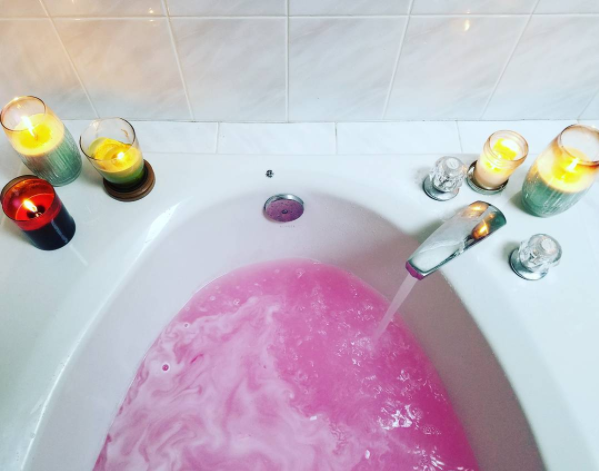
@jessengelhardt / Via instagram.com
“Let’s talk about baths for a second, okay? Joints feeling achy? Been on a cane for a few days? March (or roll) yourself to a damn tub, throw in (or have someone help you throw in) a half cup of epsom bath salts. Turn off the lights and soak for as long as you damn well please. A hot bath eases my pain in such a wonderful way. And ~bonus~: it helps melt the stress away, which can help ward off flare ups!
If you’re in a particularly bad flare up and getting in and out of a tub isn’t doable (we’ve all been there!), a seated shower works wonders as well!”
8. Give yoga a try.
instagram.com / Via instagram.com
“I’ve been suffering from a compression fracture in my vertebrae since I was 15, going on 16. As it’s worsened over time, I’ve recently taken up yoga and it’s so far the best thing I could do for my back because it helps strengthen both my core and my back, as well as teach me balance, flexibility, and good posture.”
—Jacqi Prochaska, Facebook
9. Exercise in the water for a lower-impact workout.
NFL / Via giphy.com
“Aquatic physical therapy is also a huge help. The buoyancy is such a help when it comes to doing exercises to keep your strength up as well as your range of motion and flexibility.”
10. Use tennis balls or other tools to work your muscles at home.
Anna Borges / BuzzFeed / Via buzzfeed.com
“Tennis or racquet balls or tools like the Knobble are AMAZING for sciatica and piriformis muscle pain. Lay on your back, put the ball or the Knobble tool under your butt cheek, and adjust the position until you get it directly under the spot where the spasm or sciatica is occurring. It feels sooooo good when it releases the muscle.”
Here are some self-massages you can do with a tennis ball.
11. Figure out the best ways to relax so you can keep your stress levels down.

@kelseyannrose / Via instagram.com
“I’ve tried many things, and I’ve found that relaxation and meditation are KEY. When you’re in times of stress, it’s SO easy to tense and make pain worse. Relaxation can be reached in the easiest ways — playing a game, taking a nap, watching a show, reading a book. Basically anything that makes you feel good and takes your mind off of things. Also, I find that meditations are quite calming and make your awareness of your body keen. I agree it takes some time and effort for meditations to work, but in my opinion, it’s worth it.”
12. See a doctor who specializes in pain management.
“A pain doctor ended up being my saving grace. Physical therapy wasn’t working, my chiropractor wasn’t doing it, biweekly massages weren’t cutting it, and I was so ready to give up. Then I went to a pain doctor, did a DNA test to find the right painkillers for me, got Botox injections at the pain sites (chronic back pain), and touched up in between with trigger point injections. My quality of life changed so much by seeing a pain doctor.”
13. Stock up on all the heated things — pads, mattress toppers, jackets, car seats, whatever.
FOX / Via youtube.com
“[My mattress pad] has a set in timer that lasts 10 hours. It’s also a good way for me to know if I’ve been sleeping too long.”
—leer
14. And invest in a blanket that will be your new best friend.
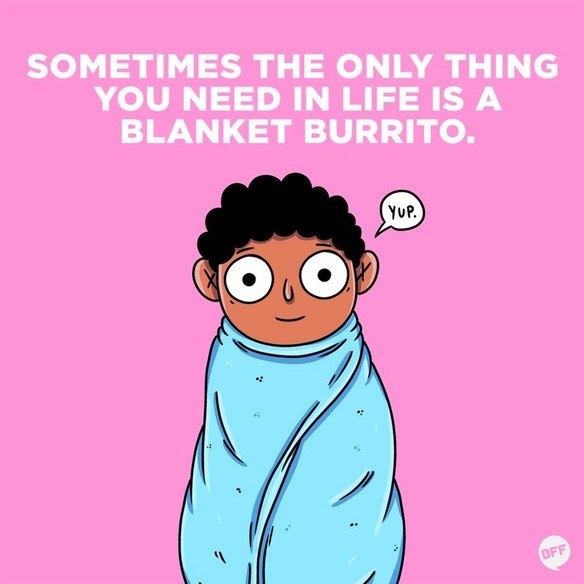
Michael Hinson / BuzzFeed / Via instagram.com
“This might sound weird but having a big fluffy blanket, like a down comforter, is so helpful. It helps cushion my joints when I can’t lay regularly, especially my arms. It’s also provides a good cozy feeling that helps me emotionally, too. When I’m having a really bad flare up, sometimes I just need some extra time in bed and it helps to be comfortable. Sometimes that extra hour or two of sleep makes a huge difference with a flare up.”
15. Utilize wheelchairs and other mobility aids when you need them.
“Do not be afraid to use mobility aids. I’ve had quite a few experiences where I wouldn’t have been able to go out or participate in an event, but using a wheelchair made it possible. A lot of Spoonies are afraid to use mobility aids because many abled people out there can get pretty judgmental (it sucks, I know), but they aren’t the ones who are living your life, and you can guarantee they’d use mobility aids in a heartbeat if they had even a fraction of your pain.”
16. Get comfortable saying “no” without beating yourself up.

NBC / Via weheartit.com
“There are going to be times where doing something isn’t an option, whether it’s because you’re having a bad flare day or it’s simply dangerous for your health. Your safety is more important than another person’s opinion, and if they’re really going to make it hard on you, then they’re not worth your time anyway.”
17. Join a support group to connect with people who actually get it.

Sally Tamarkin / BuzzFeed / Via buzzfeed.com
“Finding the right support group helped me a lot. I have Ehlers-Danlos Syndrome, which causes chronic pain among other things. Thankfully mine isn’t too bad right now, but I’m also a collegiate swimmer, and sometimes the pain gets pretty bad and not many people understand. Luckily I found a support group on Facebook specifically for athletes with EDS and it’s been very reassuring to know there are other people in my exact situation.”
18. Pick up an artistic hobby that can serve as a distraction or self-care act.
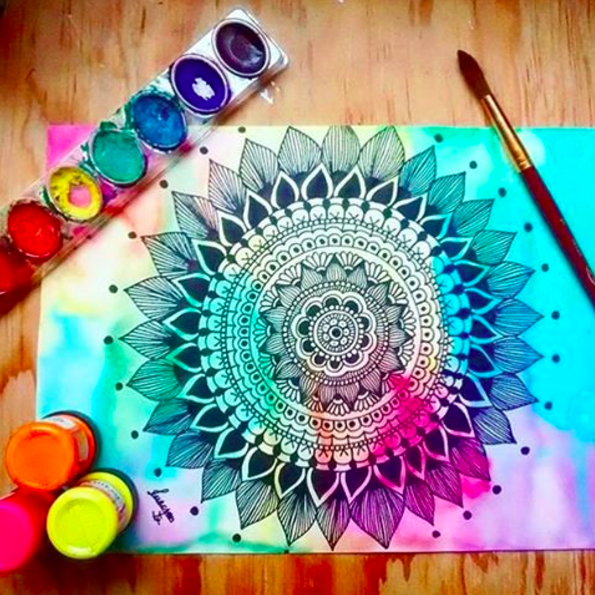
@coloringlifestyle / Via instagram.com
“Since I had to deal with my chronic pain alone, arts and crafts have been a huge outlet for me. They allow me to focus on the task at hand and make the more daunting tasks of the day go away. Even for people who don’t think they’re good at crafting, anything’ll do!”
19. Consider getting a pet.

Submitted by kirstenw5 / Via buzzfeed.com
“We currently have two guinea pigs and taking care of them and playing with them helps me more than anything else in this world. They help my PTSD, but also help my pain conditions because I take better care of myself to take care of them.”
20. Don’t get just any old massage — seek out one designed to help your pain.

Wavebreakmedia / Getty Images
“Therapeutic massage therapy! Massage therapy definitely cannot help everything, but if you can find a therapist who truly understands the body and how the nerves and muscles interact, they might be able to start you on the track to feeling better. Don’t go to a spa expecting medical-grade bodywork — do some research and find someone who specializes in what you need.
Final note: therapeutic massage does NOT necessarily mean deep tissue. If your massage therapist hurts you, they’re doing it wrong. If your body is more comfortable with light-touch massage, that’s okay! It can still be massively beneficial.”
21. Don’t be afraid to try more ~alternative~ treatment methods like acupuncture and cupping.
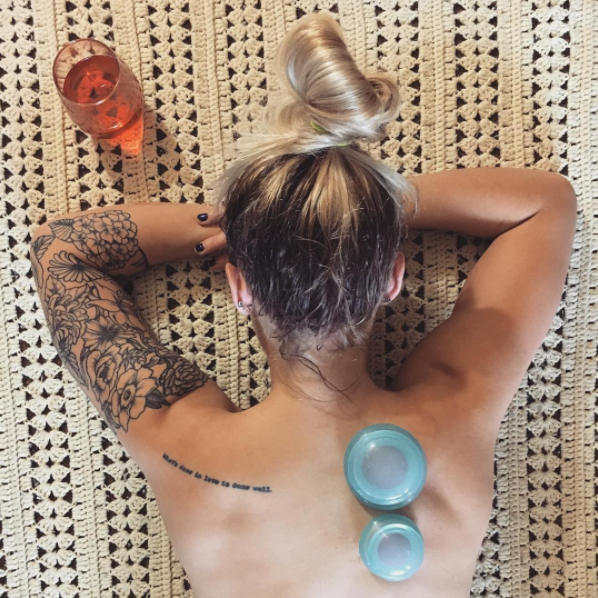
@wodwithwine / Via instagram.com
22. Try out a wearable unit for pain, like a TENS (Transcutaneous Electrical Nerve Stimulation) unit.
“Bought a nice one for $25 on Amazon. Best purchase ever.”
23. Ask other people with chronic pain for advice whenever you can.

FOX / Via symonetownley12.tumblr.com
“Seriously, I’ve gotten some of my best advice in waiting rooms. Shit I never would have thought of or believed if I hadn’t heard someone else explaining it.”
24. Give yourself permission to ditch the brave “I’m okay” face.
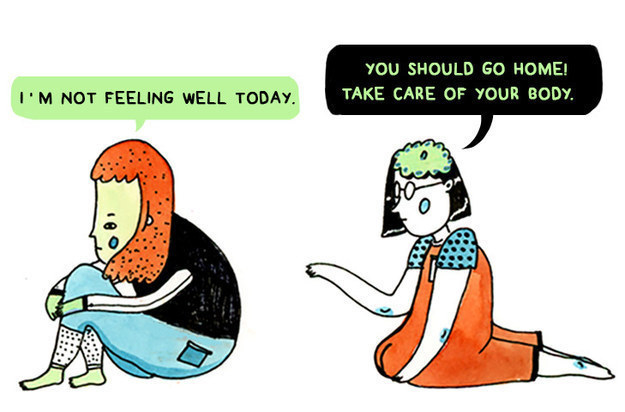
Haejin Park for BuzzFeed / Via buzzfeed.com
“Don’t try to hide your pain from the world. Part of being strong is being honest and not just pushing through the pain. When it gets to be too much, sometimes you just need to let it out. If you end up crying in the grocery store, so be it. People are usually going to be supportive, and if they are not, then they don’t deserve your time.”

0 comments:
Post a Comment